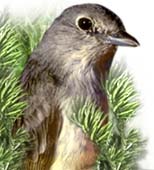The Colorado Plateau is a high, flat tableland carved into soaring mesas, great
cliffs, chasms, and canyons. It includes much of northern Arizona, eastern
Utah, western Colorado, and northwestern New Mexico. The entire length of the
Colorado-Utah state line lies within the region, and in Colorado the region
extends upstream along the lower basins of the Yampa, White, Colorado,
Gunnison, Dolores, and San Juan rivers to the Southern Rocky Mountain region to
the east and the Wyoming Basin to the north. The Basin and Range region borders
the Colorado Plateau at the continental divide in northwestern New Mexico and
takes in much of central New Mexico, extending northward into Colorado to
include Raton Mesa, Mesa de Maya, and the San Luis Valley.
In Colorado, elevations of the mesa tops range from 1500-2800 m (4,921-9,186
ft) and some 900 m (2,953 ft). The area takes in 34,213 km2 (13,210
mi2 ) of Colorado. Within Colorado, the Colorado Plateau contains a
high proportion of publicly owned lands, with the Bureau of Land Management
being the area's largest landowner. The National Park Service manages a
national park and five national monuments in western Colorado. The parks and
monuments are devoted to geologic phenomena, especially canyons, and to the
archeological remains of ancient cultures. Most of the highest elevations fall
within the domain of the U.S. Forest Service, and three national forests lie
partially within the region. The Southern Ute Indian Reservation lies along the
New Mexico-Colorado border. The largest portion of private lands are farm and
ranch lands. These, along with the area's rather limited urban development, are
primarily located along the lowland riparian zones.
Historically, the most extensive land use on public and private lands on the
Colorado Plateau has been livestock grazing. There has also been extensive
mineral, oil, and gas development as well. Aspen, ponderosa pine, and
spruce-fir forests at higher elevations are logged. The region is popular for
outdoor recreation, and many miles of primitive roads and trails support
extensive off-road vehicles use.



